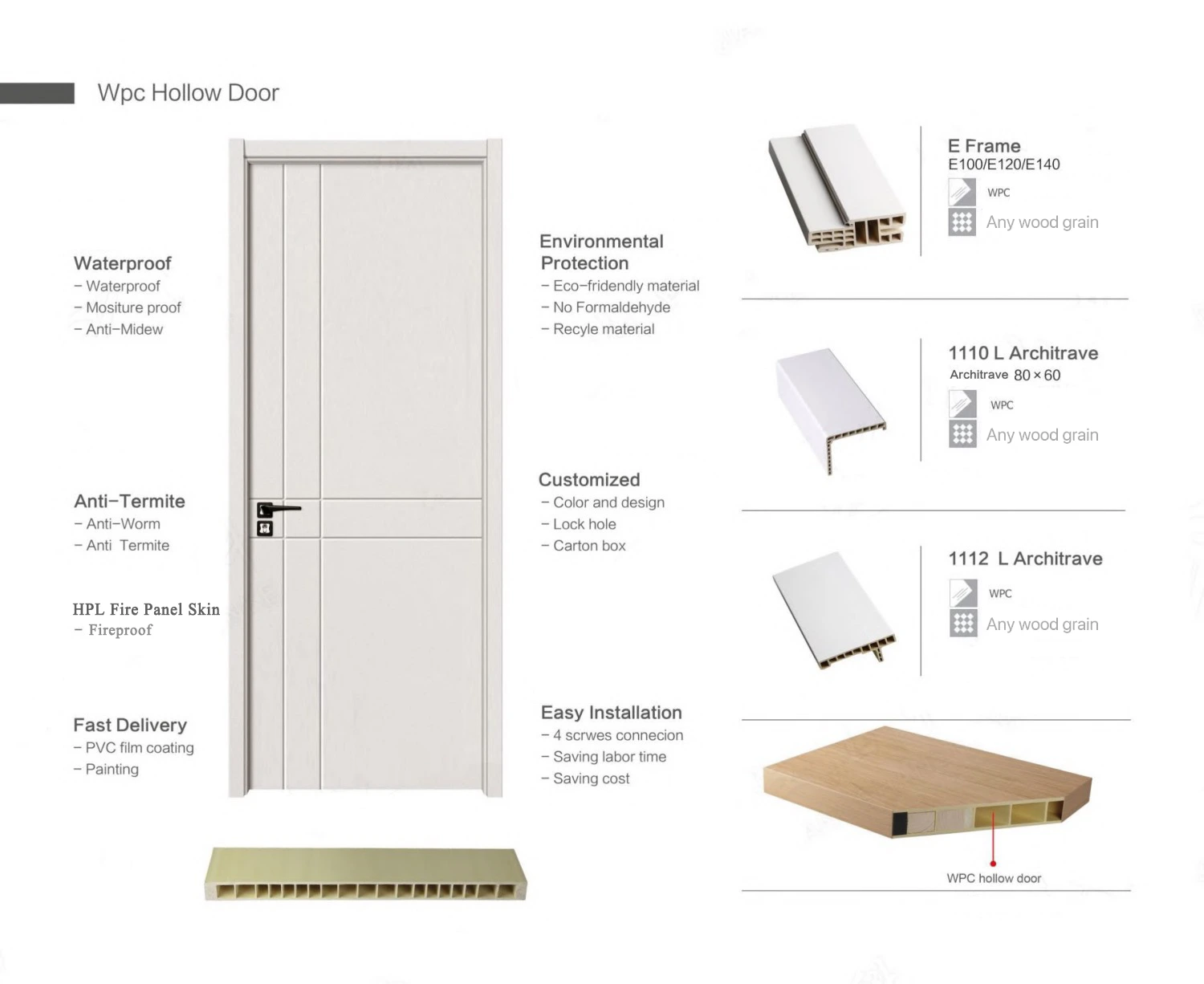Many clients planning a home renovation often ask questions that go beyond materials or specifications - they want to know how the doors and panels will perform in real, everyday life. This section often asks questions about actual use, as well as unexpected issues that you might not consider before starting to work on your new door.
1. What should I keep in mind when choosing a door for homes with pets or children?
Safety and durability are essential when there are children or pets in the home.
Sharp edges, fragile glass, and heavy doors that can easily fall over can all be dangerous. For homes, we recommend doors with soft-close hinges, rounded edges, and unglazed windows in high-traffic areas.
In terms of materials, WPC or high-pressure laminate doors are more resistant to scratches and dents, making them ideal for pets or toys to enter and exit. Solid wood doors, while beautiful, are more prone to chipping, while MDF doors with a durable film finish are a safer, more stylish choice for a child's room.
There's also soundproofing to consider: solid doors help reduce noise transmission between bedrooms and playrooms. The Haibo range of family-friendly models are all made in our interior door factories, providing stylish living and peace of mind for families with children and pets.
| Door Feature | Suitable for Families | Not Recommended |
|---|---|---|
| Soft-close Hinges | Y | NO - Loud-closing doors |
| Rounded Edges | Y | NO - Sharp corner frames |
| Glass Panels | N | YES - Safety glass only |
| Scratch Resistance | Y | NO (Soft natural wood) |
2. How do I prevent my doors from warping or swelling during the rainy season?
Door warping or swelling is a common problem in humid regions or poorly ventilated homes. Moisture is usually the culprit—when wooden doors absorb too much, they expand and may no longer close properly.
To prevent this, it’s crucial to choose the right materials. WPC and PVC doors are both highly moisture-resistant, making them suitable for tropical climates or coastal homes. If you prefer natural wood, opt for engineered wooden doors with proper sealing and finishes that resist moisture absorption.
Proper installation also plays a role—there should be at least 5–10 mm clearance at the bottom to avoid contact with wet floors. Additionally, ensure your rooms are well-ventilated and consider using dehumidifiers during the wet season. At our Wooden Door Factory, we use kiln-dried wood and precision treatments to enhance dimensional stability year-round.

3. Can I repaint or refinish a Haibo door after installation?
Yes, but it depends on the door type. If you purchased solid wood or veneer doors from Haibo, they can typically be sanded down and refinished multiple times, allowing you to change the look to match new interior décor. Just make sure to use the proper primer and paint or stain.
On the other hand, PVC or melamine-laminated doors are not meant to be repainted. These surfaces are manufactured with color and texture built-in, and applying paint may cause to peeling or uneven finishes. In such cases, if a visual update is needed, replacement or re-wrapping with vinyl may be better options.
Haibo’s design team offers pre-finished options in a wide range of tones, from matte white to dark walnut. This allows you to select a timeless design from the start—no painting necessary. For those who love DIY, we recommend sticking with Wooden Door Factory lines for repainting flexibility.
4. What type of door is suitable for small apartments or limited spaces?
In compact apartments or studio layouts, every inch matters. Traditional swing doors can take up a lot of space, making movement awkward in narrow hallways or tight kitchens. The ideal solution here is to use sliding doors or folding doors.
Haibo’s sliding doors—available in both woodgrain and modern finishes—can be installed either inside the wall (pocket-style) or along the outside with a track system. They’re good for closets, pantries, bathrooms, and even bedrooms.
Additionally, WPC or PVC folding doors can be used as flexible dividers in multi-purpose rooms, such as separating a workspace from a sleeping area. These options not only save space but also add a sleek, contemporary look. At our WPC Door Factory, we design solutions that maximize function without compromising form.
5. Do wall panels really help with insulation or are they just decorative?
Wall panels do more than just enhance interior design—they can significantly impact insulation, both thermal and acoustic. For example, thicker WPC or HPL wall panels help reduce heat loss in winter and block sound transmission between rooms or floors.
This makes wall panels particularly useful in home offices, entertainment rooms, or bedrooms located near noisy streets. Even decorative MDF panels, when installed over a foam or acoustic backing, can improve room comfort and energy efficiency.
Of course, not all panels are equal. At our Wall Panel Factory, we produce layered panels with optional acoustic cores and fire-resistant coatings. So while many buyers initially choose panels for style—like woodgrain, marble, or fabric finishes—they quickly discover the additional benefits of a more insulated, quieter, and more energy-efficient home.
Ending: Your Real Questions Matter
Interior design is about more than just aesthetics: it’s about creating spaces that are comfortable, functional, and fit for your daily life. That’s why we’ll continue to share practical answers to questions you might not ask before embarking on a renovation project.
Whether you’re planning a small renovation or a full-blown overhaul, check the Haibo Door Industry News section regularly for more useful homeowner tips and answers to common questions. From installation advice to space-saving tips, we’ve got more practical advice.

 English
English русский
русский Français
Français Español
Español bahasa Indonesia
bahasa Indonesia عربى
عربى



